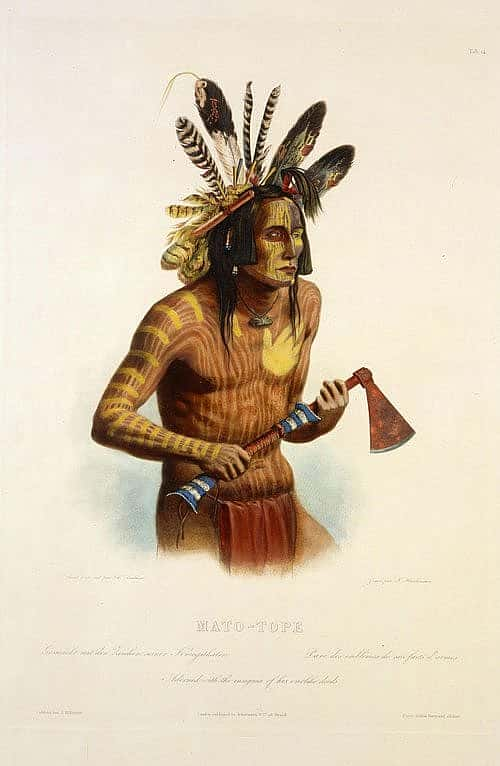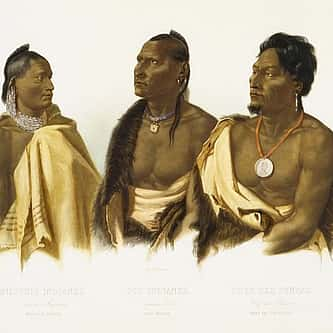
Nineteenth century American West on view with Bodmer exhibit
Had it not been for Karl Bodmer’s 1830s drawings of the people and places of the American West, that way of life might have remained shadowy at best. In 2013, visitors shared Bodmer’s journey through the temporary exhibit Karl Bodmer Prints: Images of North America, on view at the Buffalo Bill Center of the West (formerly Buffalo Bill Historical Center).
In 1832, Prince Maximilian “Prince Max” of Wied (1782 – 1867), a German aristocrat and naturalist, invited Swiss artist Karl Bodmer (1809 – 1893) to join him on a scientific journey through North America. As they traveled along the Upper Missouri River, Bodmer created accurate drawings of the people and places they encountered. He became one of the first European artists to depict the Native peoples of the American West.
Soon after the expedition began, Prince Max wrote to his brother that Bodmer “is a lively, very good man and companion, seems well educated, and is very pleasant and very suitable for me; I am glad I picked him. He makes no demands, and in diligence he is never lacking.” Prince Max and Bodmer set out from St. Louis, Missouri, in April 1833 on the 2,500-mile journey by steam and keelboat up the Missouri River. They traveled as far as Fort McKenzie, near present day Fort Benton, Montana; wintered at Fort Clark near the Mandan villages; and continued downriver the following spring, having spent over a year on the Upper Missouri.
On the expedition, Bodmer depicted some of the same characters that artist George Caitlin had painted just months before. Bodmer was also the last artist able to paint the Mandan Indians in North Dakota before the fatal 1837 smallpox epidemic that nearly obliterated the tribe. As Bodmer painted portraits of the various Native Americans they met, Prince Max conducted studies and made notes on the botany and zoology of the areas.
By the end of the journey, Bodmer had created 400 watercolors to illustrate Maximilian’s expedition, and when he returned to France—never to visit America again—he completed 81 plates, many used in Prince Max’s book. Each elegant painting displayed extremely detailed and accurate accounts of Indian ceremonies and everyday life, and in 1843, Maximilian’s lithographs were published in Travels in the Interior of America. The images became very popular and were widely reproduced. To be sure, the prints shaped the way Americans viewed the people and places of the West.
Written By
Nancy McClure
Nancy now does Grants & Foundations Relations for the Center of the West's Development Department, but was formerly the Content Producer for the Center's Public Relations Department, where her work included writing and updating website content, publicizing events, copy editing, working with images, and producing the e-newsletter Western Wire. Her current job is seeking and applying for funding from government grants and private foundations. In her spare time, Nancy enjoys photography, reading, flower gardening, and playing the flute.


